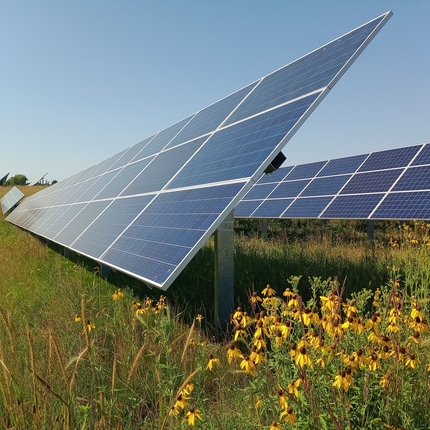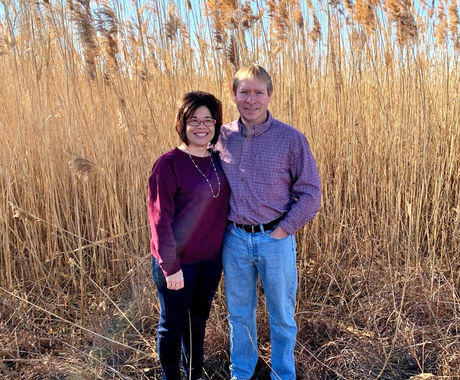Clean energy progress is happening in the Fergus Falls and Sherburne County, Minnesota, communities where Hoot Lake and Sherco solar projects are adding substantial renewable energy to the grid to replace coal generation. As Minnesota utilities look to achieve 100% clean electricity generation by 2040, projects like these are vital to the transition.
The decision to begin shutting down Xcel Energy’s Sherburne County coal-generated power plant at the end of 2023 and a subsequent groundbreaking for the Upper Midwest’s largest solar array, which will serve customers across the region, is one sign of ongoing progress toward the state’s carbon-free energy goal.
For more than 45 years, the Sherco coal plant in Becker has supported the growth of the Twin Cities metro area with enough power for roughly 1.5 million homes. But, with a law requiring all Minnesota electric utilities to produce only carbon-free energy by 2040 now on the books, Xcel and other energy companies are turning to sources like solar, wind, hydroelectric, and nuclear power. Upon completion in 2025, the 460-megawatt Sherco Solar Project will produce enough clean energy to power 100,000 homes across the Upper Midwest.
The shutdown and new development of the Sherco site demonstrate how the transition to clean energy can be reliably and affordably done for Xcel customers. But it is not the only time a utility has made the switch.
On May 31, 2021, after 100 years of coal-fired energy generation at the Hoot Lake Power Plant in Fergus Falls, Minnesota, the system was retired. The decision to cease operation created a unique opportunity for Otter Tail Power (OTP)—a utility provider for Minnesota, North Dakota, and South Dakota—to better serve its customers.
In preparing to shut down the Hoot Lake Power Plant, OTP needed to find reliable energy-producing sources to continue serving its customers’ needs. The results were the Merricourt Wind Energy Center in eastern North Dakota and Astoria Station in eastern South Dakota, which came online in December 2020 and May 2021, respectively.
The Merricourt Wind Energy Center comprises 75 wind turbines with a capacity of 150 megawatts (MW), which is enough to power 65,000 homes annually. Astoria Station, a natural gas combustion turbine, has a 245 MW capacity. The turbine provides a low-cost, reliable energy backstop across the OTP three-state service area.
The former coal plant location is now home to a 49 MW solar project known as Hoot Lake Solar. The site spans 450 acres, making it the third largest solar array in Minnesota. It consists of approximately 130,000 panels and has the ability to power 9,000 homes annually.
With Hoot Lake Solar’s proximity to an existing transmission interconnection, the project allowed OTP to add renewable energy to the grid without having to invest in costly additional infrastructure. Much of the project’s success is also attributed to the ability to reuse transmission infrastructure and interconnection rights from the coal plant.
In addition to supporting Minnesota’s energy transition goals, OTP expects that Hoot Lake Solar will provide more than $120,000 in local taxes annually to benefit Fergus Falls.
Developed with the environmental consciousness to uphold OTP’s value of being good stewards of the land, Hoot Lake Solar obtained its Habitat Friendly Solar Gold Standard Certification through the Minnesota Board of Water and Soil Resources. Habitat Friendly standards ensure that projects are providing multiple landscape benefits, including the establishment of habitat for pollinators, songbirds and other species, and are maintained for the lifespan of the project.
Preparing for the end of operations at Hoot Lake Power Plant allowed OTP to support Minnesota’s clean electricity goals while also prioritizing service to its customers. By providing solar and wind energy as well as a natural gas combustion turbine, the company closed out an era of coal-generated electricity and opened a new era of offering reliable energy in a cost-effective way.
Feature photo courtesy of Center for Pollinators in Energy.





